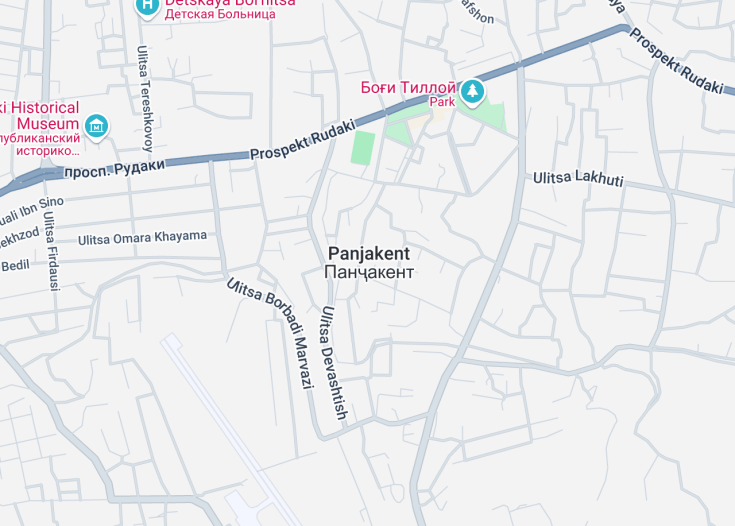Panjakent, situated in northwestern Tajikistan, is a gateway to the past, offering a glimpse into the rich tapestry of Central Asian history and culture. Known colloquially as the “City of Five Villages,” it boasts ruins that date back to the 5th century, offering insights into its rich Sogdian heritage.
Modern-day Panjakent merges antiquity with the contemporary, making it a fascinating destination for historians and tourists alike. The city’s vibrant bazaars, stunning mountain landscapes, and proximity to the legendary Silk Road further add to its allure, making it an intriguing spot for an enriching travel experience.
When visiting Panjakent, don’t miss exploring its ancient ruins early in the morning to escape the afternoon heat and fully enjoy the serene historical ambiance.
Plan your visit to coincide with the local bazaar days for an authentic taste of Tajik culture and a chance to buy unique, handcrafted souvenirs.
Top things to do & see in Panjakent
Select the following sights and activities to discover best tickets and tours available in Panjakent.
Panjakent: Gateway to the Past
| Country | Tajikistan |
| Time in Panjakent | GMT+5 |
| Language spoken | Tajik |
| Population | 42,000 (Source: Latest Census Data) |
| Currency | Tajikistani Somoni (TJS ₽) |
| Airports |
|
Panjakent, a city steeped in history, lies in northwestern Tajikistan near the border with Uzbekistan. This ancient town was once a thriving trading center on the Silk Road and maintains a rich cultural heritage to this day.
The ruins of the old city, dating back to the 5th century, attract archaeologists and history enthusiasts worldwide. Beyond its historical significance, Panjakent’s picturesque landscapes, framed by the towering mountains of the Zarafshan Range, offer breathtaking views and numerous outdoor activities like hiking and fishing in the summer months.
Where is Panjakent?
Panjakent is situated in the Sughd province of Tajikistan, nestled in the Zarafshan Valley, near the Zeravshan River.
Distances:
| Route | Distance by car | Time by car |
|---|---|---|
| Dushanbe to Panjakent | 198 miles / 319 km | Approx. 5 hours |
| Khujand to Panjakent | 149 miles / 240 km | Approx. 3 hours 30 minutes |
What is Panjakent famous for?
Panjakent is renowned for its ancient ruins and archaeological significance. It was a major city in the Sogdian Empire, known for its strategic location on the Silk Road, facilitating trade and cultural exchange throughout Central Asia.
History
5th Century BC to 8th Century AD
The city of Panjakent, situated in Tajikistan, traces its history back to ancient times, having been a flourishing cultural and economic center on the Silk Road. Originally founded in the 5th century BC, it was an essential city of Sogdiana, an ancient Iranian civilization. Archaeological findings reveal sophisticated urban planning, artistic endeavors, and Zoroastrian worship that dominated until the advent of Islam in the 8th century.
8th Century to 20th Century
With the arrival of Islam, Panjakent experienced significant religious and cultural transformations. Although it endured periods of decline after the Arab conquests, it maintained its role as a trading hub. Over the centuries, it came under various empires including the Samanids, the Timurids, and eventually the Russian Empire in the 19th century. The area witnessed relative peace under Russian rule, transitioning into part of Soviet Tajikistan in the 20th century.
20th Century Onwards
In recent times, Panjakent has evolved into a modern city, balancing its rich historical heritage with the development demands of contemporary life. Post-Soviet independence has seen a resurgence in cultural pride and revitalization of its historical sites, crucial for both educational purposes and tourism, which contribute to the local economy.
Visit Panjakent
What to see and do in Panjakent
In Panjakent, the blend of history and culture offers an enriching experience for any visitor. Explore the ancient ruins of the old Sogdian city which provide insights into pre-Islamic urban architectures like the city’s fortress and residential houses.
The local museum showcases artifacts that highlight the Silk Road’s significance in the area. Outdoor enthusiasts can visit the stunning lakes of the Fann Mountains for trekking and natural beauty. Key attractions include:
- The Archaeological Sites of Ancient Panjakent
- Rudaki Museum
- Fann Mountains
- Seven Lakes (Haft Kul)
- Zeravshan Valley Trek
Festivals and Events in Panjakent
In Panjakent, cultural events truly bring the local traditions to life. The annual ‘Sayri Guli Lola’ (Festival of Tulips), typically held in April, celebrates the blooming of flowers and the arrival of spring. The ‘Mehrgon’ harvest festival occurs in autumn, showcasing traditional dances, music, and local handicrafts, reflecting Tajikistan’s rich cultural tapestry.
Best time to visit Panjakent
The perfect time to visit Panjakent largely depends on the activities planned. For hiking and viewing the natural landscapes, the late spring to early autumn months (May to September) offer the ideal climate.
Alternatively, cultural enthusiasts might prefer visiting during festival periods like spring for ‘Sayri Guli Lola’ or autumn for ‘Mehrgon’ to experience Panjakent’s vibrant traditions.
Is Panjakent worth visiting?
Indeed, Panjakent is a destination worth visiting, especially for those who appreciate merging historical exploration with stunning natural environments.
Its rich tapestry of history offers a unique glimpse into the past civilizations of Central Asia, while the surrounding landscapes are perfect for outdoor activities. The blend of cultural festivals, ancient ruins, and natural beauty ensures a diverse and enriching experience for all who venture there.










